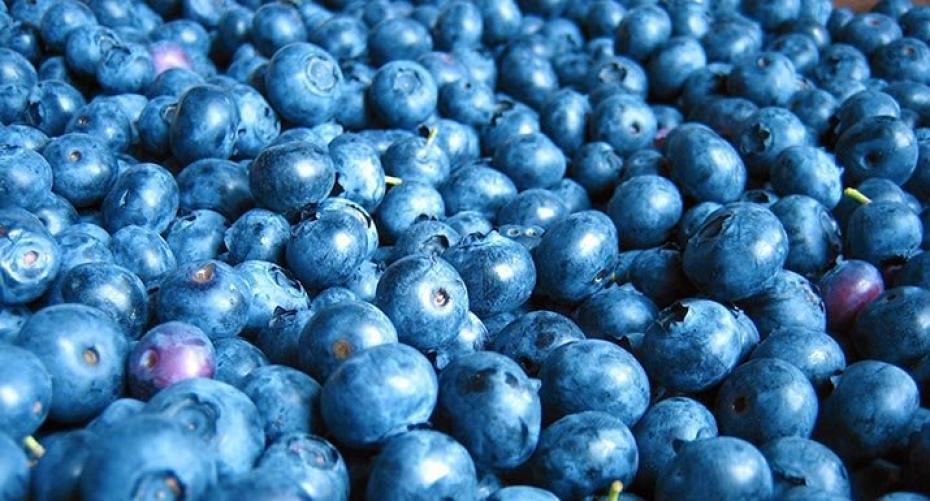Blueberries are bursting with goodness and make beautiful garden plants
Blueberries are one of nature’s ‘superfoods’, make attractive garden plants and are easy to grow. As they are expensive to buy in the supermarket it makes sense to grow your own. They are native to North America; with the USA producing about half of the global total and Canada producing a third. They have several proven health benefits with on-going studies discovering more; and are high in Vitamin C.
They have high antioxidant properties which help combat free radicals which are instrumental in damaging DNA and cellular structures. At present there are on-going studies into the problems associated with old age and memory loss. A daily intake has also been shown to reduce high blood pressure and lower cholesterol. Organically grown berries have more health benefits than commercially grown fruit. They are best eaten raw for maximum flavour and nutritional benefit. Anyone with untreated kidney or gall bladder problems would be best advised to avoid them.
They are of the Vaccinium genus and belong to the Ericaceae family. In the wild they thrive on damp acid soils. They grow quite happily in pots or in the garden; either in the vegetable plot or the ornamental borders, as they have lovely pearly bells in spring and good red/gold autumn colour. The berry colour can be blue, maroon or purple/black. Taste varies from mild and sweet to sharp and tangy.
How to grow
If you have an alkaline soil you will have to grow the blueberries in a pot. A pot 45cm (18”), diameter is sufficient. Make sure there is a good layer of crocks in the bottom to aid drainage and stop the drainage hole blocking with silt. Plant in good quality ericaceous compost. They can grow to 180cm (6’), but are fairly slow growing. If growing in the ground plant them 150cm (5’) apart and mulch with peat every year.
Situation
They are hardy but need a position in full sun protected from the wind.
Pollination
They are self-fertile but growing 2 different varieties will result in a much heavier crop.
Pruning
No pruning is generally necessary; just cut out any old bare stems.
Watering
Water well in summer with rain water as it is more acidic than mains water. Don’t let them stand in water in the winter.
Feeding
If the ground is poor dig in the recommended application of a general fertiliser, such as Growmore. Otherwise a feed of sulphate of ammonia or Sequestrene in spring is sufficient.

Pests and diseases
Generally disease free.
Picking the fruit
Fruit is fully ripe one week after it has turned blue; during this week it will become sweeter.
Preserving
Freezing is the best way to deal with a glut as it doesn’t impair the flavour and the health benefits. Just spread on a baking sheet and store in plastic bags when fully frozen. Discard any berries which are soft or damaged.
Eating
They are delicious as a breakfast food on cereal, in a smoothie, with yogurt or in a fruit salad.
Cinnamon French Toast with Blueberries
(courtesy of chef Shaun Hill)
Ingredients:
- 150ml double cream
- 2 eggs + 1 egg yolk
- 1 tbsp caster sugar
- ½ teasp ground cinnamon
- 8 slices bread
- 1 tbsp butter
- Icing sugar
- 100g blueberries & 2tbsp blueberry jam mixed together
Method: Whisk together: cream, eggs, egg yolk, sugar and cinnamon.
Remove crusts from bread and dip in the mixture.
Heat butter in the frying pan until bubbling; fry bread until golden on both sides.
Drain on kitchen paper.
Dust with icing sugar & spoon over toast.




![Kingsbury-bench-05[1].jpg](http://www.hayesgardenworld.co.uk/cdn/shop/files/Kingsbury-bench-05_5B1_5D.jpg?v=1712162737&width=1500)
![Kingsbury-bench-01[1].jpg](http://www.hayesgardenworld.co.uk/cdn/shop/files/Kingsbury-bench-01_5B1_5D.jpg?v=1712161065&width=1500)
![tw17a-4947_0[1].jpg](http://www.hayesgardenworld.co.uk/cdn/shop/files/tw17a-4947_0_5B1_5D.jpg?v=1712161495&width=1500)
![tw17a-4947_tenbury_5ft[1].jpg](http://www.hayesgardenworld.co.uk/cdn/shop/files/tw17a-4947_tenbury_5ft_5B1_5D.jpg?v=1712161172&width=1500)
![tw17a-4952_tenbury_4ft[1].jpg](http://www.hayesgardenworld.co.uk/cdn/shop/files/tw17a-4952_tenbury_4ft_5B1_5D.jpg?v=1712161034&width=1500)
![thumbnail_IMG_1565-kik_2[1].jpg](http://www.hayesgardenworld.co.uk/cdn/shop/files/thumbnail_IMG_1565-kik_2_5B1_5D.jpg?v=1712226536&width=1500)
![thumbnail_IMG_1565-kik_1[3].jpg](http://www.hayesgardenworld.co.uk/cdn/shop/files/thumbnail_IMG_1565-kik_1_5B3_5D.jpg?v=1712159637&width=1500)



![WD-XgESA[1].jpeg](http://www.hayesgardenworld.co.uk/cdn/shop/files/WD-XgESA_5B1_5D.jpg?v=1712159609&width=1500)